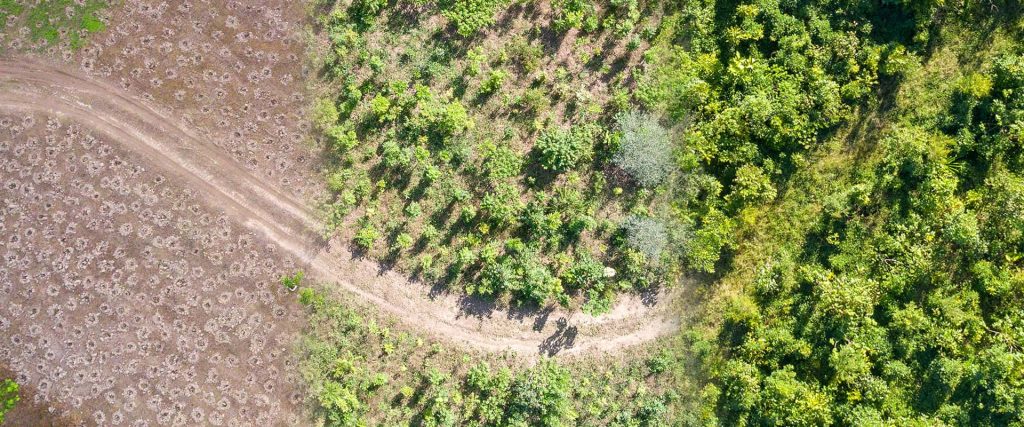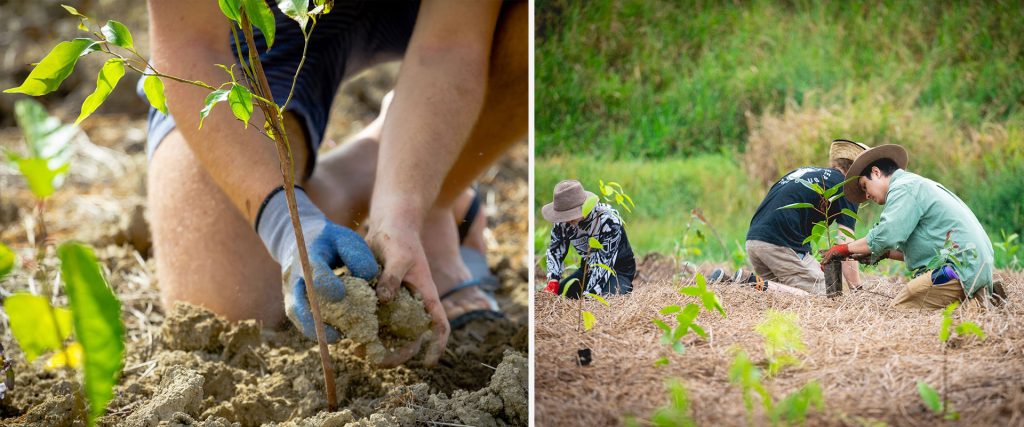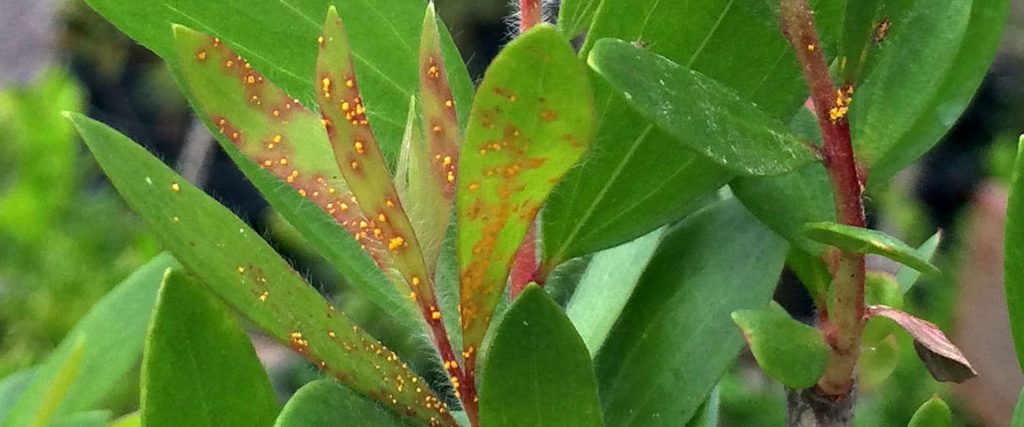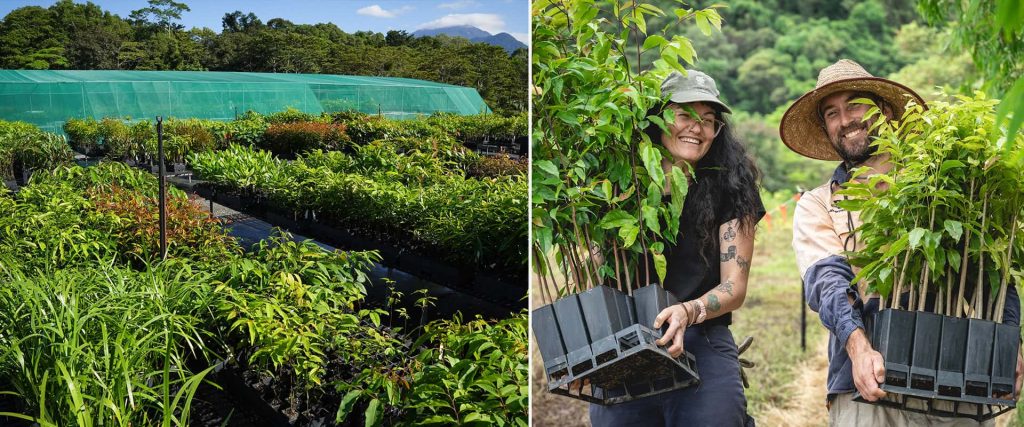The 3Ps of Habitat Restoration success
 In just a few years habitat restoration can make a remarkable difference to a degraded landscape. ©Martin Stringer
In just a few years habitat restoration can make a remarkable difference to a degraded landscape. ©Martin Stringer
Changing land use remains one of the biggest threats to biodiversity and overall native species’ populations. However, the choice to restore land into natural habitat presents the opportunity for Nature to thrive once again in degraded areas.
Beyond the benefits to the native natural environment, there are incentives for habitat restoration. For example, Queensland’s Land Restoration Fund paves (or rather, plants) the way for landowners to transition the use of some or all of their land into carbon farming and even biodiversity credit projects.
Restoration inevitably involves a core input – native plants, suitable for the bioregion where the land is located. In the Wet Tropics, these plants will endure extremities of wet and dry weather, with contrasts of intense sunshine in exposed areas and eventual deep shade in dense regrowth combining with the potential for waterlogging or even rapid water run-off.
Which means that planning your plants and planting is crucial for restoration success.
If you or someone you know is embarking on a land or habitat restoration project, our short guide to the 3Ps – Planning your Plants and Planting – can nurture successful regeneration. The result will be great for native wildlife and rewarding for all involved.
Understand your site to get it right
Context is everything with habitat restoration. The topography (terrain), climatology (weather) and pedology (soil) of a site all interweave with the ecology (flora and fauna) that your restoration project is aiming to encourage back into the location. By understanding these factors, you can then plan for the appropriate plant species that will thrive with those growing conditions. For example, note if changes in altitude affect drainage, or if parts of the site are prone to standing water during the periods of heavy rain.
Through our work in the field, Rainforest Rescue has experienced flooding at its restoration sites and identified key species that can withstand prolonged exposure to floodwaters.
Restoration will in time adjust the impact of environmental conditions, such as by introducing micronutrients into the soil or localising levels of wind exposure. This means prioritising the success of the first plants into the site, so that they can tolerate their new surroundings, begin to mature and provide canopy cover for later plantings and emergent natural succession.
Knowing the context of your site will also help with choosing plants that would otherwise struggle to ‘arrive early’ at this location. A good example are species that rely on large animals to assist seed dispersal, such as Cerbera floribunda (Cassowary Plum), which is unusual to find in an exposed area like an open paddock where Cassowaries are unlikely to venture. Strategically choosing species like this in your restoration plant stock can give natural regeneration a head start.
By planning your plant species and quantities early, you’re assured they’ll be ready for planting at the optimum time of year. ©Martin Stringer
Plan your Plants early
Knowing the nuances of your site conditions, it’s time to plan what plant species (and how many plants) you’ll need for restoration.
Our golden rule is simple. The earlier you can plan plants, the better.
According to our Native Nursery team, there are two main reasons why. Firstly, plant stock takes time to germinate from collected seeds. It may sound obvious, but it’s easy to overlook this fact. Depending on the species you need for your site, there could be several months between planning and planting, to ensure that you’re receiving plants that have grown for the optimum time to be ready to plant out. Hardening plants through the transition from shadehouse to the open air is vital for the likelihood of a plant reaching maturity. In turn, healthy plants can increase the survival rate of newly planted habitat.
Secondly, because plant species germinate at different speeds, it’s possible to align the new growth so that you have the maximum number of species ready to plant during a planting session. This efficiency allows you to prep, water in and manage more plants with similar growth needs.
For convenience, Rainforest Rescue’s Native Nursery team manages our year-round germinating species mix available. Thereby reducing the chance of a species gap when you place an order for native plants.

Planting at the end of the wet season gives the young trees pliable soil and some overcast days – making the transition from pot to ground less stressful. ©Martin Stringer
Plant at the optimum time of year
With your restoration plants in stock, it’s time to consider the time, again! Because the cycle of a year brings changes in weather and growing conditions, you need to consider the optimum time to plant.
Our Land Management team recommends planting at the end of the wet season, before the ground hardens and dries too much. This time of year, plants will still receive rainfall, lessening reliance on water from irrigation. It’s also a time when flooding risk is much lower, which allows smaller plants the chance to mature ahead of the next ‘big wet’.
With the site conditions favourable, consider if your plants are ready too. A plant with little root structure in its pot will suffer greater stress when the pot is removed than one that has a healthy root system. Exacerbating transplant shock can lead to a lower success rate, so it’s good to discuss the health state of your plants with a horticulturalist.
Our friendly Native Nursery team shares expert tips and strategies for success with restoration projects, so every conservation partner can get the most from their native plants order.
Prep your site for planting success
Before the plants go into the ground it’s time to prepare well. Disturbing the land for planting can encourage any weeds in the site’s seedbank to germinate, so be prepared to manage weeds on your newly planting site to increase survival rate. minimising the time between prep and planting will lessen the chances of weeds taking over the exposed site.
Easing the shock for plants in the transition from pot to ground is key. Applying water crystals in the planting holes alongside your choice of fertiliser will give plants a better chance to re-establish their root systems and take their share of water as it passes through the soil.
Rainforest Rescue’s Land Management team liaises with our Native Nursery team to ensure that the journey from hardening area to restoration site to plants in ground is as comfortable as possible for young seedlings. Make sure you have a transition plan in place for the switch from prep to planting out.

Native plant affected by Myrtle rust, a fungal disease that is fatal to many tropical rainforest trees. ©Scott Nelson
Consider the impact of invaders
Sadly, the likelihood of restored habitat being totally free of invasive species is quite low. Weeds and non-native animals, such as feral pigs, present a persistent threat to the success of habitat restoration. So, it’s best to restore with an open mind and anticipate the potential arrival of pests…
If you’re aware of feral pig activity nearby, be mindful of planting native palm species and pandanus as they are a highly prized food source for a voracious herd of pigs. Their ploughing snouts will turn over everything in their path to get to your newly planted palms.
Likewise, if you’re planting Myrtaceae species, consider that an increase in humidity may trigger Myrtle Rust. This disease thrives on new shoots, which means that a recent planting of Myrtaceae seedlings is at high-risk, because they’re all new shoots!
Our Native Nursery team prides itself on supplying weed-free, high quality tube stock for restoration projects – minimising the chance that you’ll be facing an outbreak of vines and non-native grasses at your restoration site.
Plan for Nature to takeover
Ultimately, restoring habitat allows Nature to be in control of the landscape once again. That’s why it’s important to understand how the successional stages will affect the timeline of restoration at your site. By planting strategically, you can allow natural succession to emerge quicker.
Our approach to restoration encourages the use of ‘pioneer species’, plants that grow and mature rapidly. There are multiple benefits in doing so. Pioneer species achieve quick canopy closure, which shades out weeds (especially virulent non-native grasses), to allow slower growing secondary and mature phase species to start their maturation.
Canopy closure reduces the need for ongoing maintenance at a habitat restoration site, which can be financially beneficial. But it’s the benefits to Nature that we’re most excited about! Many pioneer species bear fruit at an early stage, so they encourage native birds and bats to feast on this newly available food source. The faunal droppings are likely to contain other seeds, which adds natural diversity to the new forest floor. And with a short life span, pioneer species will provide excellent nutrition for the soil, as returning termites and fungi devour the dead plants, enriching the soil layer.
In time, Nature will retake its rightful place as rainforest returns to the land. What a remarkable journey to embark upon.
We wish you every success with your habitat restoration project. Our Native Nursery team are here to help you achieve your plans of bringing Nature back to your land. Take a look at our Native Plant Orders page to understand why our plants offer great value to you and the environment.
Want more good Rainforest news in your life?
Subscribe to our eNews | Follow us on Instagram | Like us on Facebook | Subscribe to our YouTube channel
Help Protect Rainforests Forever
Donate to Protect Rainforests Forever | Become a Rainforest Guardian for as little as $2 a month | Partnership Options


